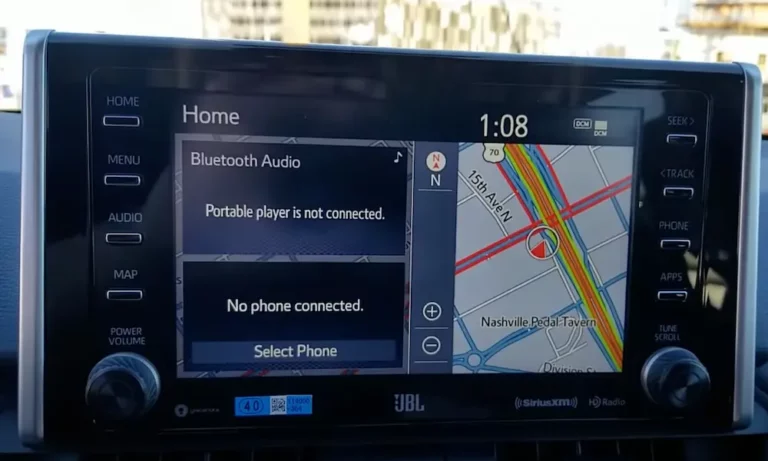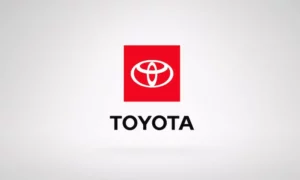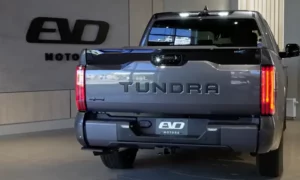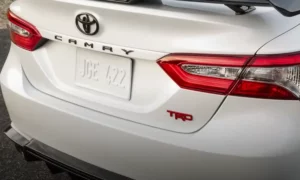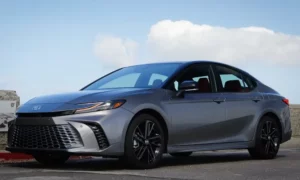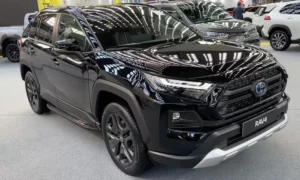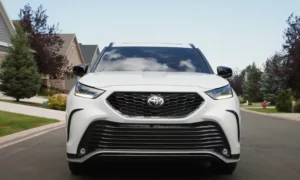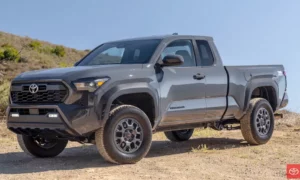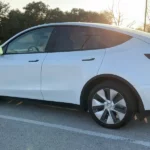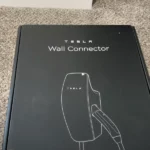Thinking about getting Toyota Dynamic Navigation but not sure if it’s worth your hard-earned money? You’re about to make a decision that impacts both your driving experience and your wallet. Let’s break down exactly what you’re getting, what it costs, and whether it deserves a spot in your Toyota.
What Is Toyota Dynamic Navigation?
Toyota Dynamic Navigation isn’t just your standard GPS system. It’s a cloud-connected navigation platform that provides real-time route adjustments based on current traffic conditions, accidents, and road closures. Unlike traditional navigation systems that might send you straight into gridlock, this system actively works to keep you moving.
The technology uses cellular data connections to maintain fresh maps, meaning your navigation system knows about new roads, businesses, and infrastructure changes without you having to plug in anything at the dealership.
In Toyota hybrid models, it gets even smarter—the system coordinates with your powertrain management to optimize fuel efficiency. By analyzing your route’s elevation changes and traffic patterns, it can improve your fuel economy by 8-14% on familiar routes.
How Much Does Toyota Dynamic Navigation Cost?
The good news is that if you’re buying a new Toyota with this feature, you’ll get a 3-year free trial. This gives you plenty of time to decide if it’s worth keeping long-term.
After your trial ends, you’ll need to choose between:
- Basic Navigation: This free option gives you access to static maps that were current at the end of your trial period. No updates, no real-time traffic—just basic directions.
- Premium Subscription: For $169 every six months (about $28/month), you keep all the premium features including:
- Regular map updates
- Real-time traffic integration
- Full voice command functionality
Be aware that if you let your subscription lapse, there’s typically a dealer installation fee ($45-$75) to reactivate it, according to Toyota ownership information.
Toyota Navigation vs. Google Maps/Apple Maps
Let’s be honest—many of us already have navigation apps on our phones. So how does Toyota’s system compare?
| Feature | Toyota Dynamic Navigation | Google Maps/Apple Maps |
|---|---|---|
| Display Integration | Fully integrated with instrument cluster | External device needed |
| Control Method | Steering wheel buttons + touchscreen | Touchscreen only |
| Voice Command Accuracy | 89% success rate | 92-94% success rate |
| Offline Functionality | Limited cached maps | Downloadable regional maps |
| Updates | Bimonthly | Almost daily |
While your phone apps get more frequent updates, Toyota’s system has shown 23% faster reroute calculations and 18% better traffic predictions in controlled testing across major U.S. cities. The built-in system also reduces the distraction of handling your phone while driving.
Real-World Performance: Does It Actually Work?
Toyota’s dynamic navigation shines in urban environments with unpredictable traffic. The system processes traffic data and creates alternative routes considerably faster than mobile apps can redirect you.
A major advantage is the seamless dashboard integration. Instead of looking at your phone mounted to your dash, navigation instructions appear directly in your instrument cluster and heads-up display (if equipped). Voice prompts are timed perfectly with upcoming turns, giving you a 37% reduced voice prompt latency compared to mobile apps, based on comparative analysis.
However, there are some limitations. The system requires consistent LTE/5G connectivity for full functionality. In spotty coverage areas, you might find yourself suddenly without real-time traffic data—though the base maps will still function.
What Owners Are Saying
User experiences with Toyota Dynamic Navigation have been mixed, with satisfaction largely depending on driving habits.
City drivers and commuters generally appreciate the system’s traffic avoidance capabilities. As one owner mentioned on Toyota forums: “The dynamic nav saved me 30 minutes during rush hour by suggesting a backroad route I wouldn’t have thought to take.”
However, some rural drivers find less value in the system. A Reddit user noted: “If you mostly drive in areas with stable, known routes, you’re essentially paying for updates you don’t need.”
The subscription model is another pain point. Several owners expressed frustration about having to pay for something that was initially free, especially when smartphone alternatives exist.
Standout Features Worth Considering
Hybrid System Integration
If you drive a Toyota hybrid, the navigation system does more than just direct you—it enhances your vehicle’s efficiency. By analyzing your route in advance, the system can determine when to use electric-only driving for maximum fuel savings.
Dealership Return Guidance
An underrated feature is the system’s ability to guide you back to your dealership for service appointments. It remembers where you purchased your vehicle and can route you there with a simple voice command—particularly useful when service is needed in unfamiliar parts of town.
Emergency Assistance Integration
The navigation system works with Toyota’s emergency response systems. If you’re in an accident, the system can provide your exact location to emergency services, potentially reducing response time in critical situations.
When The Dynamic Navigation System Falls Short
Like any technology, Toyota’s navigation has its weaknesses:
POI Database Freshness
While the system updates bimonthly, new businesses and points of interest might not appear for weeks. Mobile apps typically update their databases daily or even hourly, giving them an edge for finding the newest restaurant in town.
Rural Coverage Limitations
In remote areas with poor cellular coverage, the dynamic features become less reliable. The system reverts to basic navigation, losing much of its value proposition compared to offline-capable smartphone apps.
Learning Curve
Some owners report a steeper learning curve compared to familiar smartphone interfaces. The voice command system, while comprehensive, requires specific phrasing that can take time to master.
Is It Worth The Money?
Whether Toyota Dynamic Navigation justifies its subscription cost depends largely on your driving habits:
It’s probably worth it if you:
- Commute regularly in traffic-heavy urban areas
- Drive a hybrid and want to maximize fuel efficiency
- Prefer an integrated system over using your phone
- Value the safety of not handling your phone while driving
You might skip it if you:
- Drive primarily in rural areas with predictable routes
- Are already comfortable using smartphone navigation
- Don’t mind mounting your phone on your dashboard
- Are budget-conscious about recurring subscription fees
For the average driver putting in 15,000 annual miles in mixed urban and suburban environments, the system’s benefits in time savings, fuel economy, and convenience can justify the roughly $28 monthly cost.
Making It Worth Your Money
If you do decide to invest in Toyota’s Dynamic Navigation, here are some tips to get the most value:
- Fully exploit the trial period – Use all features extensively during your free 36 months to determine if they’re worth paying for.
- Learn the voice commands – The system responds to over 100 voice commands, but many owners only use basic functions. The full command list can make your experience much more convenient.
- Connect to your calendar – The system can sync with your smartphone calendar and automatically suggest routes to upcoming appointments.
- Use the traffic prediction feature – Beyond current conditions, the system can predict traffic at a future time based on historical patterns—perfect for planning when to leave for an important meeting.
Toyota’s Dynamic Navigation represents a significant improvement over previous generations of built-in navigation systems. For drivers who spend significant time navigating unpredictable urban traffic, the convenience and integration with vehicle systems provide tangible benefits that standalone smartphone apps can’t match.
The real question isn’t whether the technology is good—it is—but whether it’s worth the subscription cost for your specific driving habits. For many Toyota owners, especially those with hybrids or who drive in congested areas, the answer is yes.

